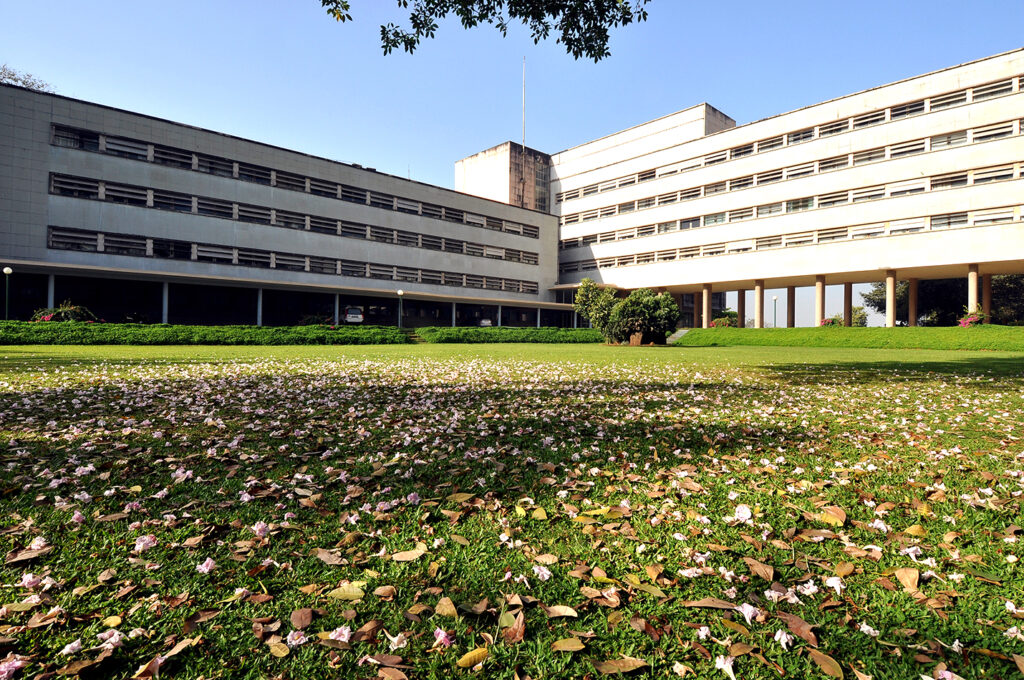
In a letter written on 12th March, 1944 to Sir Sorab Saklatwala, then chairman of the Tata Trusts, the eminent physicist Homi Jehangir Bhabha outlines his plans for the new Institute:
There is, at the moment in India, no big school of research in the fundamental problems of physics, both theoretical and experimental. There are, however, scattered all over India competent workers who are not doing as good work as they would do if brought together in one place under proper direction. It is absolutely in the interest of India to have a vigorous school of research in fundamental physics […] provided proper appreciation and financial support are forthcoming, it is one’s duty to stay in one’s country and build up schools comparable with those that other countries are fortunate in possessing. […] The scheme I am now submitting to you is but the embryo from which I hope to build up in the course of time a school of physics comparable with the best anywhere.
Chandrashekhar Khare’s article tracing the path he tread to proving Serre’s celebrated modularity conjecture, during roughly the decade he spent at the Tata Institute of Fundamental Research, offers a fitting tribute to the prophetic vision of Homi Bhabha.
Introduction
The Tata Institute of Fundamental Research (TIFR), located at the southernmost tip of the peninsula of the bustling city of Mumbai, is devoted to basic research in the sciences and mathematics. The vision of its founder Homi Bhabha is seen in the physical campus of TIFR: when one drives or walks up from the gates of the institute to the main building, there is a gradual expanding feeling of awe. The path opens up to a lavish view of a colonnade which is a pillared path between the East and West lawns. Walking down the colonnade one sees successive frames of the Arabian Sea in between its pillars. There is a high-mindedness in the air, and the surroundings have a rigorous beauty. I imagine that Homi Bhabha would have wanted visitors to the institute to experience this sense of awe and wonder as they walked past the gates of the institute and made their way to the main building.
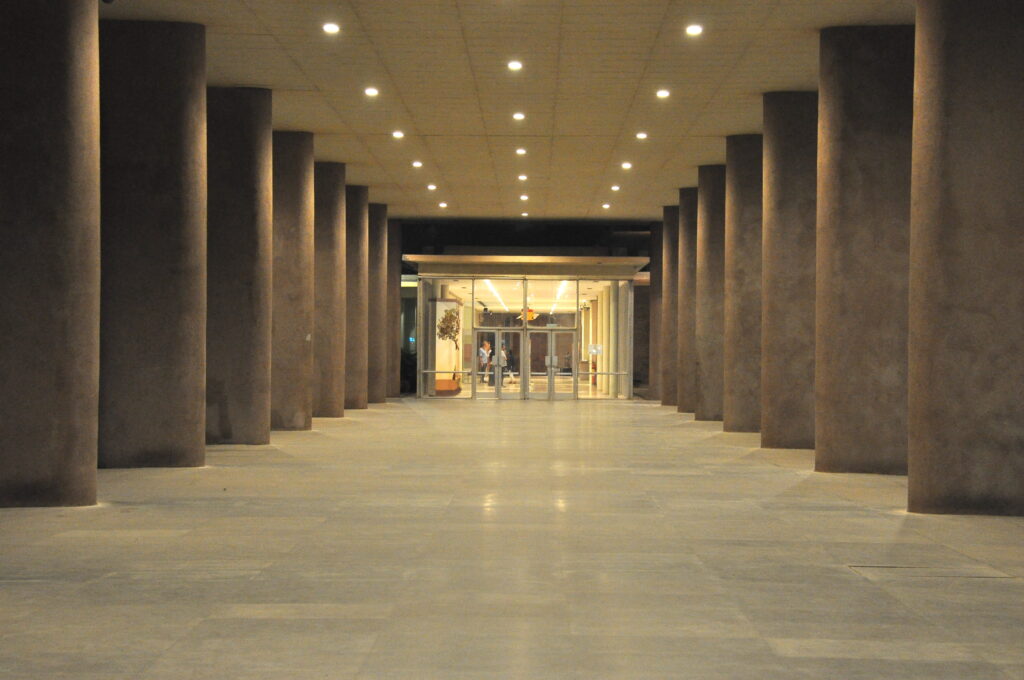
The early years and Homi Bhabha
TIFR was born in a remarkable set of circumstances. It took shape soon after India won independence, although it had been conceived of even earlier. The foundation stone of the present campus was laid in 1954 and the main building was built by 1962. TIFR came to prominence in the world of mathematics and science in the 1960s, not long after this.
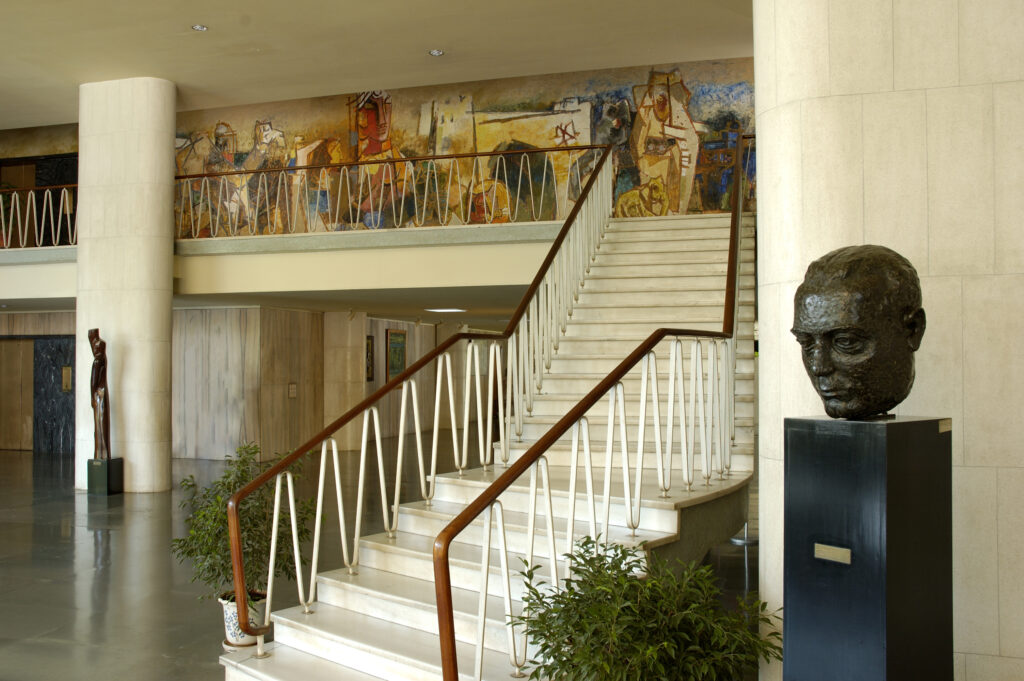
The institutions TIFR and BARC (Bhabha Atomic Research Centre) that he built represent a synthesis of a single person’s vision, a government that was sympathetic to science and learning, and a private company Tata that was willing to do its bit for science. These were long-term bets and investments which have since paid rich dividends.
Bhabha had a strong sense of aesthetics. TIFR is also remarkable and almost unique amongst its peers across the globe for its remarkable art collection, mostly mid-twentieth-century Indian art. Homi Bhabha collected and curated this collection for the institute. In this again, his impeccable taste and vision are clear. The artists he collected have become amongst the most distinguished names in Indian art, and he collected their works when they were still at the beginning of their careers. Such features make the Tata Institute a distinctively Indian institution—one of its kind—quite unlike most other institutes in the world, with strong roots in the Indian ethos.
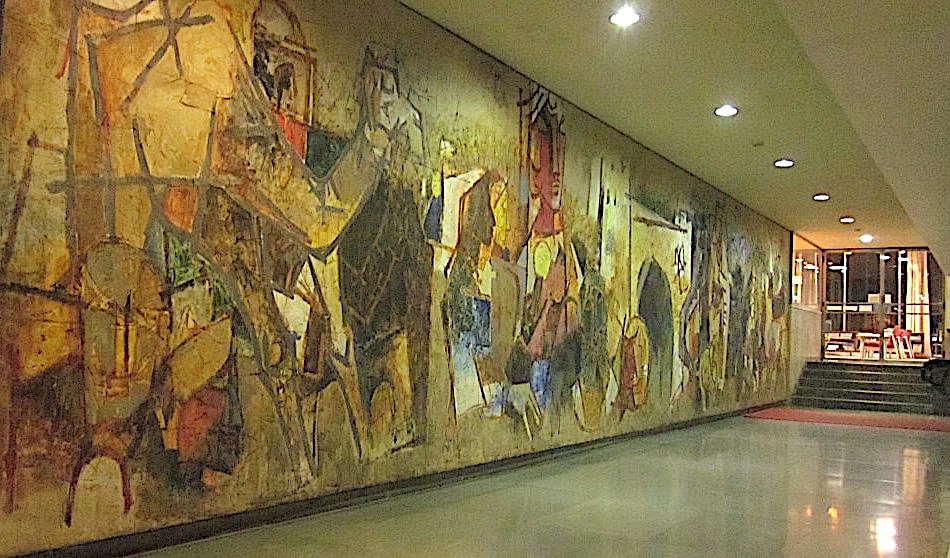
TIFR soon became an outlier of excellence in all of Asia and the developing world for the work done in it in science and mathematics. For a long time, it had the best science and mathematics library in Asia. One of Bhabha’s principles was that the library should be open round the clock!
A seminal period for the pure sciences in modern India is the work done at the School of Mathematics at TIFR from the 1960s onwards.3 The School of Mathematics did astonishingly well. Leading mathematicians from all over the world came for extended periods of up to four or five months at a time to give a course of lectures on different topics at the frontiers of research. The research scholars took notes that were later written up and published as mimeographed books that became well-known in the mathematics community across the world as TIFR Lecture Notes Series.4 The young mathematicians at TIFR were sent on deputation to leading centres like Paris to learn directly the latest developments in fields of pure mathematics like algebraic geometry. They came back and proved deep theorems that made the world sit up and take notice. A prime example of such an instance was a theorem proved by M.S. Narasimhan and C.S. Seshadri, in their 1965 paper titled “Stable and Unitary Vector Bundles on a Compact Riemann Surface” in the Annals of Mathematics, that is foundational and still relevant. It marked a remarkable flowering of mathematical creativity in the newly independent India.


Singular genius of Ramanujan
The modern era in Indian mathematics has several beginnings. One of them is the work of Ramanujan that was much earlier, and far more singular. Singular because of the unusual nature of Ramanujan’s genius, and also because it was an isolated and very individualistic (as in tied to a single individual) instance of mathematics emerging from India.
His story must be known to most readers of this article, so I will keep it very brief. Ramanujan (1887–1920) died when he was just 32 years old, but in his short life did work that made a great impact and still has relevance. He was a self-taught genius, swayambhu. He created mathematics working by himself in Madras. He rediscovered many results in mathematics that had been proved by great masters like Leonhard Euler and Carl Jacobi, along with results that turned out to be new and striking. His mathematics has the touch of the uncanny. He wrote down marvellous identities as if plucking them out of thin air. He was a formalist par excellence. Following his own instincts, he discovered beautiful and significant mathematics in unlikely places.
Ramanujan’s genius bloomed like a wild flower in a forest. Ramanujan could achieve a lot despite all the handicaps that he faced, and the almost complete lack of institutional support in a country that was still under the crushing yoke of British rule. His example inspired Indians interested in the pure sciences living in a colonized country. It made them believe that they too could make contributions at the highest level in spite of the odds stacked against them.
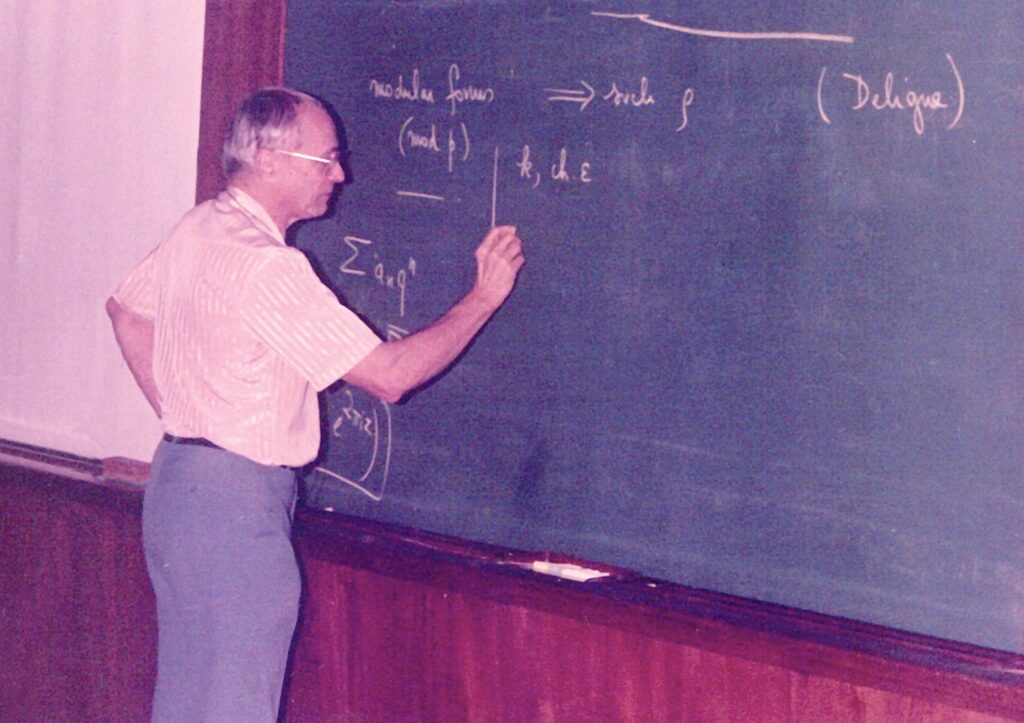
Some of his eminent and generally sympathetic contemporaries like G.H. Hardy thought that Ramanujan might have drifted into the backwaters of mathematics. Hardy qualified this by saying that “the problem might have some features which made it not unworthy of Ramanujan’s attention”. Sure enough, the conjectures Ramanujan made about \tau(n) had a huge influence on modern number theory. There is a clear line that one can draw from Ramanujan’s striking and novel observations and conjectures (aka educated guesses) in his 1916 paper to Andrew Wiles’s solution of Fermat’s Last Theorem in 1994 (more than 350 years after the problem was proposed, resolving one of the most notorious problems in mathematics), and Serre’s conjecture. One of Ramanujan’s conjectures about \tau(n) was proved more than 50 years after it was proposed in his 1916 paper (earning the mathematician who proved it, Pierre Deligne, a Fields medal in 1978); its generalizations, collectively called the “Ramanujan conjectures”, are at the heart of modern number theory.
The number 1729 is part of the Ramanujan lore. It figures in the famous anecdote of Hardy visiting Ramanujan when he was convalescing from an illness at a sanatorium in England. To cheer Ramanujan up, or maybe to provoke Ramanujan for whom every number was like a friend(!), Hardy said that the number 1729 of the cab he had taken did not seem special in any way. Ramanujan remarked that on the contrary, it was very interesting being the smallest number that can be written as the sum of two cubes in two different ways: 1729=10^3+9^3=12^3+1^3!
The number 691 belongs even more integrally to Ramanujan’s legacy. Ramanujan observed a striking congruence for the \tau(n)s modulo 691 (that is, for primes p, \tau(p) =1+p^{11} \pmod{691}) that influenced number theory profoundly. The charm of the prime 691 lies in it being neither too small (like 7) nor too big (like the prime 7,758,337,633—see the footnote below5 for its relevance to the story of the \tau function), which makes it stay in the mind!
Serre’s modularity conjecture
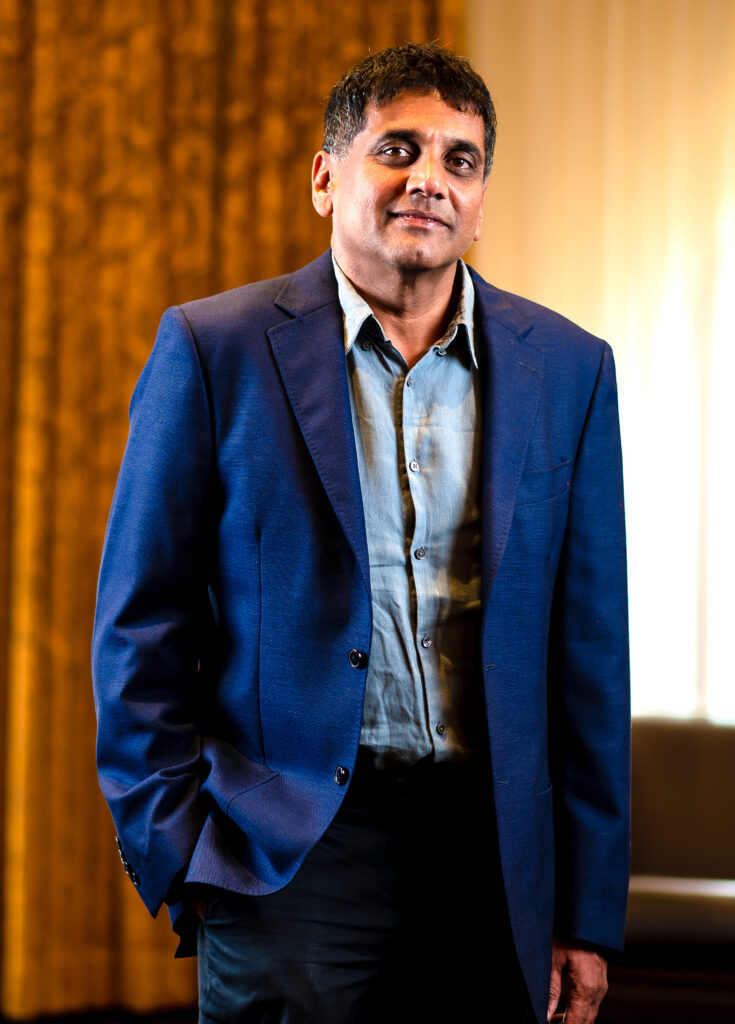
TIFR provided me the space and time to mature as a mathematician. The ethos of the School of Mathematics inspired one to be ambitious and work on hard problems which might involve risking significant capital of time and intellectual energy. Perhaps I took a cue from the environment to focus on the most central problem in my field: Serre’s modularity conjecture. The conjecture was made initially in 1973 (in a letter by Serre to his friend John Tate, one of the leading number theorists of the twentieth century), and then in a refined form in 1987. The refinement was partly stimulated by wanting to make rigorous a brilliant observation by the German mathematician Gerhard Frey about Fermat’s Last Theorem.
Fermat’s Last Theorem was, contrary to what the name might suggest, an unsolved problem posed by Pierre de Fermat in the seventeenth century. It is a simple-looking statement about the natural numbers 1, 2, 3, … which asserts that the cube of a natural number cannot be expressed as a sum of two cubes, and more generally an n-th power cannot be the sum of two n-th powers for any integer n greater than 2. Phrased as an equation, Fermat’s Last Theorem is the assertion that \[X^n+Y^n=Z^n\] has no solutions with X,Y,Z natural numbers as long as the exponent n is greater than 2. Here it is (in Latin!) as originally posed by Fermat:
Cubum autem in duos cubos, aut quadratoquadratum in duos quadratoquadratos, et generaliter nullam in infinitum ultra quadratum potestatem in duos ejusdem nominis fas est dividere: cujus rei demonstrationem mirabilem sane detexi. Hanc marginis exiguitas non caperet.
Serre’s modularity conjecture when combined with Frey’s observation implied Fermat’s Last Theorem.
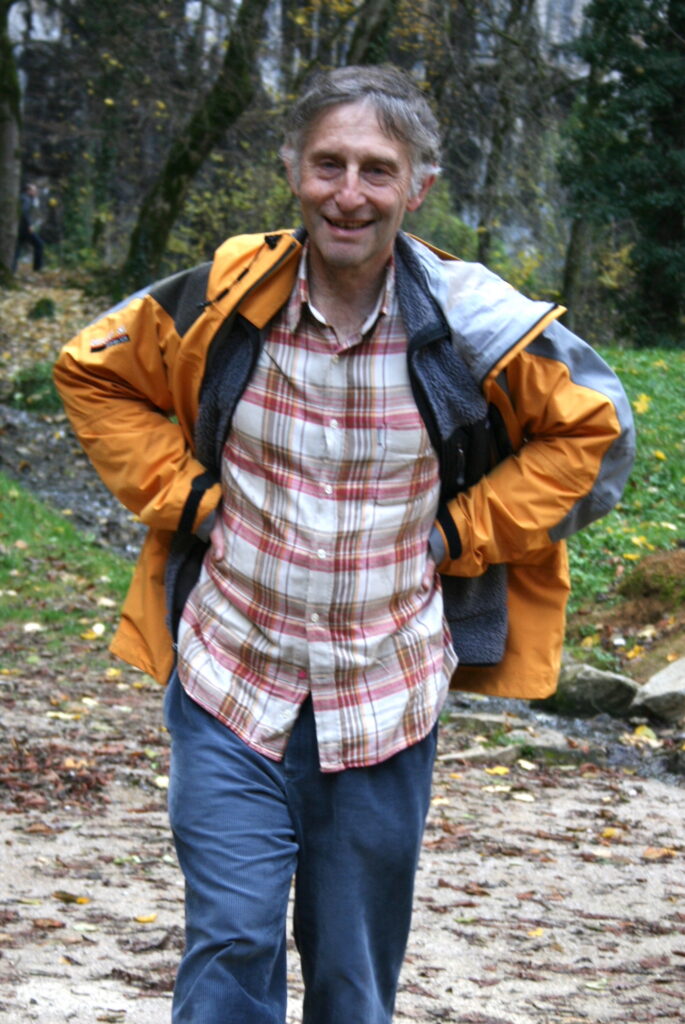
In an astonishing development in the fall of 1994, just around the time I finished my PhD and returned to India, Andrew Wiles had used the very few known solvable cases of Serre’s conjecture in his incredible proof of the modularity conjecture for elliptic curves, thus deducing Fermat’s Last Theorem as a corollary. Wiles created a wealth of techniques which assumed the truth of Serre’s conjecture as a starting point. Thus he had proved Fermat’s Last Theorem using a relatively small, but yet deep, part of the conjecture that was known. The entirety of Serre’s conjecture, like an iceberg lying below its visible tip, remained mysterious and inaccessible even after Wiles’ work.
Serre’s conjecture was related to Ramanujan’s pioneering 1916 paper, and to his remarkable congruence \mod 691. When I started thinking about it in 1995, I was just following my instincts, pushing and prodding at questions suggested by Serre’s conjecture. The Institute was set on the Arabian Sea. In my own research too I felt I was sailing on open waters. Success is only possible to gauge in retrospect; at the time I was doing the research I was just trying, not very hopeful of solving the conjecture, but motivated by it. Most of the time one was failing so it was good to be employed at a place where one could focus on long term goals.

I felt lucky to have such a challenging and attractive question to focus on! An important twentieth-century Soviet mathematician Igor Shafarevich has said that most of his papers (even ones which might be regarded by others as breakthroughs) in retrospect looked to him like shipwrecks, fatalities on the way to grander destinations. Put more simply, in doing research motivated by Serre’s conjecture, I was aiming at the stars to fall at the trees!
Serre’s conjecture implied many marvellous things besides Fermat’s Last Theorem. The statement had an economy and beauty to it which drew many mathematicians to think about it. Part of the attraction of the conjecture was the stature and charisma of the person who had made the conjecture – Jean-Pierre Serre – in the world of modern mathematics.
I began thinking about the conjecture by looking at toy models and questions suggested by it, and tried to verify some implications of the conjecture. The conjecture seemed to be at the crossroads of different branches of mathematics and thus one could try and approach it from many different angles.
In the roughly 10 years I worked at TIFR, I was doing blue sky research well before I knew this term.7 It was open-ended work motivated by Serre’s conjecture that shimmered far away on the horizon. It was a beautiful area of mathematics to think about in the inspiring setting of TIFR. I benefited from the legacy of Bhabha as incarnated in the beautiful campus of TIFR with its stunning works of (mainly abstract) art and thoughtfully landscaped grounds, and the important theorems proved at TIFR, all of which made one aspire to a similar quality in one’s own research. Little by little, I built up a collage of intuitions that gave me my own viewpoint on the conjecture.

The experience of working on Serre’s conjecture in my years at TIFR, and thereafter, was a little like gambling at a slot machine in a casino. I spent years working on it without hitting the jackpot. But the slot machine kept yielding small amounts of coins as winnings, even if initially these were lesser than the coins I inserted into it. The dribble of coins the machine kept returning encouraged me to keep trying. I was losing, but still felt that if I tried a little more, and risked a little more of my capital of time on the conjecture, I might succeed in proving something decisive related to it. In the end, when my French colleague Jean-Pierre Wintenberger and I found the right set of ideas and the three red cherries lined up, there was a cascade of coins. We had solved an outstanding problem in modern number theory!
Besides that, a key technique in our proof of Serre’s modularity conjecture also gave another way to prove Fermat’s Last Theorem which was a variation on Wiles’s proof.
Proving Serre’s conjecture was the dream of many mathematicians working in this central area of modern algebraic number theory and our proof earned several prizes and honours. The initial breakthrough in our work happened in October 2004 when I visited Wintenberger in Strasbourg from TIFR. Our first paper on the progress was written while I was at TIFR. The full proof was elaborated on in the period 2004–2009 as there were many obstacles to overcome even after the initial breakthrough. In mathematics both the beauty and the devil lie partly in the details, and we had to exorcize many demons and find many subtle ideas, before we had the complete proof of the conjecture in our bag!

The only limitations of a subject like mathematics are those that you bring to it. The subject is as expansive as the Arabian Sea that glistens in the midday sun and blinds one momentarily by its glare when one walks on the path along the coast at TIFR. The working conditions at TIFR ensured that there were no limits imposed on what I could achieve beyond my own individual limitations.
Conclusion
Ramanujan worked in a colonized country with precious little institutional support available to him for doing his mathematical work. Such was the strength of his genius that in spite of that he accomplished works of lasting value. He was invited to Cambridge by G.H. Hardy where he could be with other mathematicians who understood his work. One can only imagine what Ramanujan could have achieved had there been an institution like TIFR that fostered and supported his work within the country.
Ramanujan’s genius found expression in spite of all the vicissitudes he faced. Most people need nurture and care to express themselves in a creative and demanding discipline like research in mathematics. They need a period of gestation, in which they can mature and grow as researchers. Individuals need institutions and institutions can’t do without individuals.
Mathematical research for much of the time is a solitary activity. But the solitary hours need to be complemented by periods in which one derives sustenance from one’s environment. It helps to be employed and encouraged and given enough time to do ambitious work, to be together with other quality researchers, to work in surroundings that are inspiring, to have a cafeteria one can wander to and discuss ideas with colleagues, to be able to walk up and down a colonnade which might lead to a small shift of perspective that can be developed into a full-fledged idea later when sitting quietly by oneself. Homi Bhabha’s motivation in setting up TIFR was to bring young talented people from all across the country together in inspiring surroundings which provided all of the above. Time is a mathematician’s stock in trade (as Abraham Lincoln said about lawyers) and, along with endless cups of coffee,8 as a mathematician, one risks and invests the precious resource of one’s own time to discover a new phenomenon, or try to solve a hard problem, or prove an important theorem.

India has a rich tradition in mathematics. One need only mention storied names like Āryabhaṭa and Brahmagupta.9 In the fourteenth century, Mādhava, working in Kerala, discovered infinite series expansions for trigonometric functions more than two hundred years before Newton’s and Leibnitz’s invention of calculus in Europe. India’s present-day demographic dividend offers huge potential in all areas, including the pure sciences. The amazing talent within the country, if developed with care and adequate resources, can lead us to a golden age of science in India, laying the foundations for India’s long-term security and growth and prosperity.
It is equally true, as the great nineteenth German mathematician Carl Jacobi puts it: “The real end of science is the honour of the human mind.” Work in the arts and sciences creates civilizational products that cultures are remembered by.
India has more resources now than were available when TIFR was built in the aftermath of World War II and at the dawn of the country’s independence. With the right financial support and intelligent design, India could build on past progress and achieve further lasting excellence in science, technology and mathematics, and realize the infinite promise of its human resources. The time seems ripe for the coming together of public and private funding, and support, to help in this vital endeavour to give a fresh impetus to the basic sciences in India. \blacksquare

Footnotes
- Editor’s note: Jean-Pierre Wintenberger was a professor of mathematics at the University of Strasbourg. Co-recipient of the 2011 Cole Prize in number theory along with Chandrashekhar Khare for their proof of Serre’s modularity conjecture, Wintenberger passed away on 23 January 2019. Notices of the American Mathematical Society carried a memorial tribute to Wintenberger in its January 2022 issue. ↩
- Editor’s note: All the paintings reproduced in this article were submissions to the Mural Competition, from which was selected the submission by M.F. Husain. To read about the Mural Competition at TIFR, go to: “https://artsandculture.google.com/story/the-story-of-the-mural-competition-at-tifr-tata-institute-of-fundamental-research/NwXRtSsh5oW5Jg?hl=en”. ↩
- There is a debate about whether mathematics is more of an art or more of a science. In the art-filled surroundings of TIFR especially, one feels that it is as much art as science! I personally think of it as more of an art. ↩
- Editor’s note: One may visit this link “http://www.math.tifr.res.in/~publ/ln/” ↩
- To the more mathematically inclined reader, one should point out that there are still many unresolved questions about \tau(n). One such question is if there are infinitely many supersingular primes, namely primes p for which p divides \tau(p). Up to 10 billion, there are only 6 such primes p=2,3,5,7,2411, and 7,758,337,633. They seem very sparse and it might even be that there are only finitely many such supersingular primes, although it is not even known that there are infinitely many ordinary primes p, namely primes such that p does not divide \tau(p). As the infinitude of primes is one of the oldest theorems in mathematics, at least one of the cases occurs infinitely often, but presently we do not know which of these cases actually occurs infinitely often. Such is the extent of our collective ignorance!. ↩
- I was a student at Caltech and worked with Haruzo Hida at UCLA. ↩
- Editor’s note: According to Wikipedia, `blue sky research’ means scientific research in domains where “real-world” applications are not immediately apparent. ↩
- It has been quipped that mathematicians are machines who convert coffee into theorems!. ↩
- Editor’s note: In fact, the name of the four-storied student hostel building in the TIFR housing campus is Brahmagupta!. ↩
